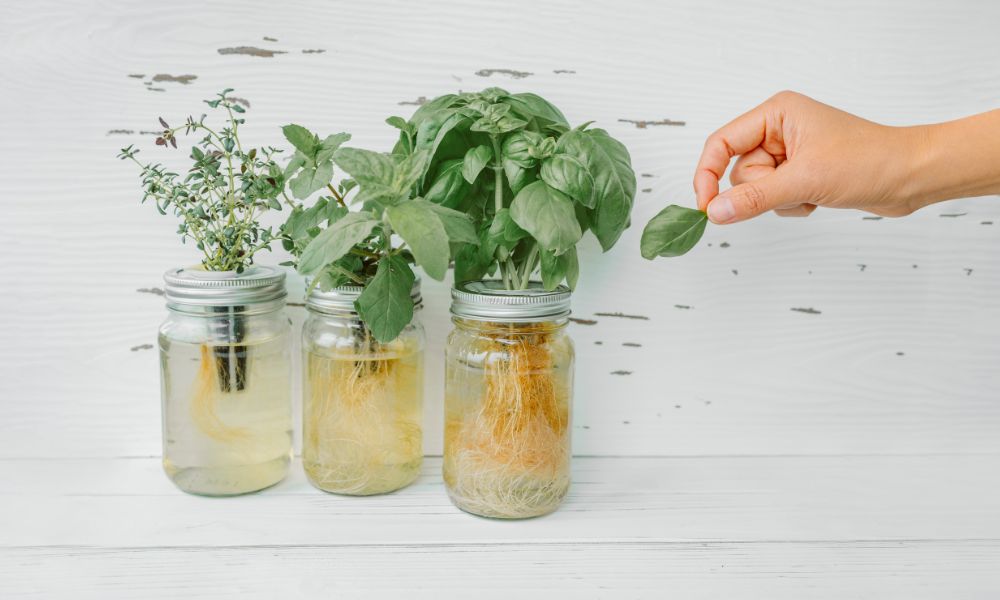Are you tired of buying expensive herbs from the grocery store, only to have them wilt and lose their flavor within days? Why not take matters into your own hands and start your own herb garden right at home? Not only will you have a fresh and abundant supply of organic herbs at your fingertips, but you’ll also be able to boost the flavor of your culinary creations like never before.
Growing herbs at home is a rewarding and cost-effective way to enhance your cooking. Imagine plucking a handful of fragrant basil leaves or snipping some fresh rosemary right from your garden, knowing that they are completely free from pesticides and other harmful chemicals. The taste difference is truly remarkable.
Starting your own herb garden doesn’t require a large space or extensive gardening knowledge. With just a few pots or even a small patch of soil, you can create an oasis of aromatic herbs in no time. From classic favorites like mint, thyme, and parsley to more exotic varieties such as lemongrass or cilantro, the choices are endless.
Not only will growing your own herbs save you money in the long run, but it’s also an incredibly satisfying hobby. Watching tiny seeds sprout into vibrant plants and nurturing them as they flourish is a truly gratifying experience. Plus, having fresh herbs readily available means you can experiment with new recipes and add that extra touch of flavor whenever inspiration strikes.
So why settle for store-bought herbs that lack freshness and flavor when you can easily grow your own? Start your herb garden today and embark on a journey towards tastier meals, healthier living, and the joy of nurturing nature right in your own backyard.
Growing your own herbs at home can be a rewarding and cost-effective way to add fresh flavors to your meals. Here are 20 tips to help you successfully grow your own herbs:
- Select the Right Location: Choose a sunny spot for your herb garden. Most herbs thrive in full sunlight, so aim for at least 6 hours of direct sunlight per day.
- Start with Good Quality Soil: Use well-draining soil with organic matter. Herbs prefer soil that is rich in nutrients and not too compact.
- Use the Right Containers: If planting in containers, ensure they have drainage holes to prevent waterlogged soil. Terra cotta pots are a good choice as they allow for better airflow.
- Choose the Right Herbs: Consider the herbs you use most frequently in your cooking. Popular choices for beginners include basil, mint, parsley, chives, and thyme.
- Watering: Herbs generally prefer slightly drier conditions, so allow the soil to dry out between waterings. Overwatering can lead to root rot.
- Mulching: Apply a layer of mulch to help retain moisture and suppress weeds around your herbs.
- Pruning and Harvesting: Regularly prune your herbs to encourage bushier growth. Harvest leaves in the morning when essential oils are most concentrated.
- Companion Planting: Consider companion planting to deter pests. For example, basil is known to repel mosquitoes and flies.
- Fertilizing: Use a balanced, all-purpose fertilizer during the growing season, but avoid over-fertilizing, which can lead to excessive leaf growth and less flavor.
- Rotate Your Crops: If you’re growing herbs in the same location year after year, consider rotating your crops to prevent soil-borne diseases.
- Start from Seeds or Seedlings: Decide whether to start your herbs from seeds or purchase seedlings. Some herbs, like basil and cilantro, are easy to grow from seeds.
- Understand Growth Habits: Be aware of the growth habits of your herbs. For example, mint tends to spread vigorously, so it’s often best grown in containers.
- Organic Pest Control: Use natural pest control methods like neem oil or companion planting rather than relying on chemical pesticides.
- Label Your Herbs: Label your herbs to avoid confusion. Use plant markers or labels to identify each herb in your garden.
- Be Mindful of Invasive Herbs: Some herbs, like mint, can be invasive. Plant invasive herbs in containers to prevent them from taking over your garden.
- Harvest Regularly: Harvesting regularly encourages new growth. Don’t be afraid to trim your herbs to use in your cooking.
- Indoor Herb Garden: If outdoor space is limited, consider growing herbs indoors on a sunny windowsill. Use containers with drainage holes.
- Check for Pests: Regularly inspect your herbs for pests such as aphids or spider mites. Early detection helps prevent infestations.
- Learn about Each Herb: Understand the specific needs of each herb you’re growing. Different herbs may require slightly different care.
- Enjoy the Process: Gardening is a learning experience. Enjoy the process, and don’t be discouraged by initial challenges. Your gardening skills will improve over time.
Growing herbs at home is not only practical but also provides the satisfaction of using fresh, home-grown ingredients in your cooking. Adjust these tips based on your specific herbs and growing conditions.




